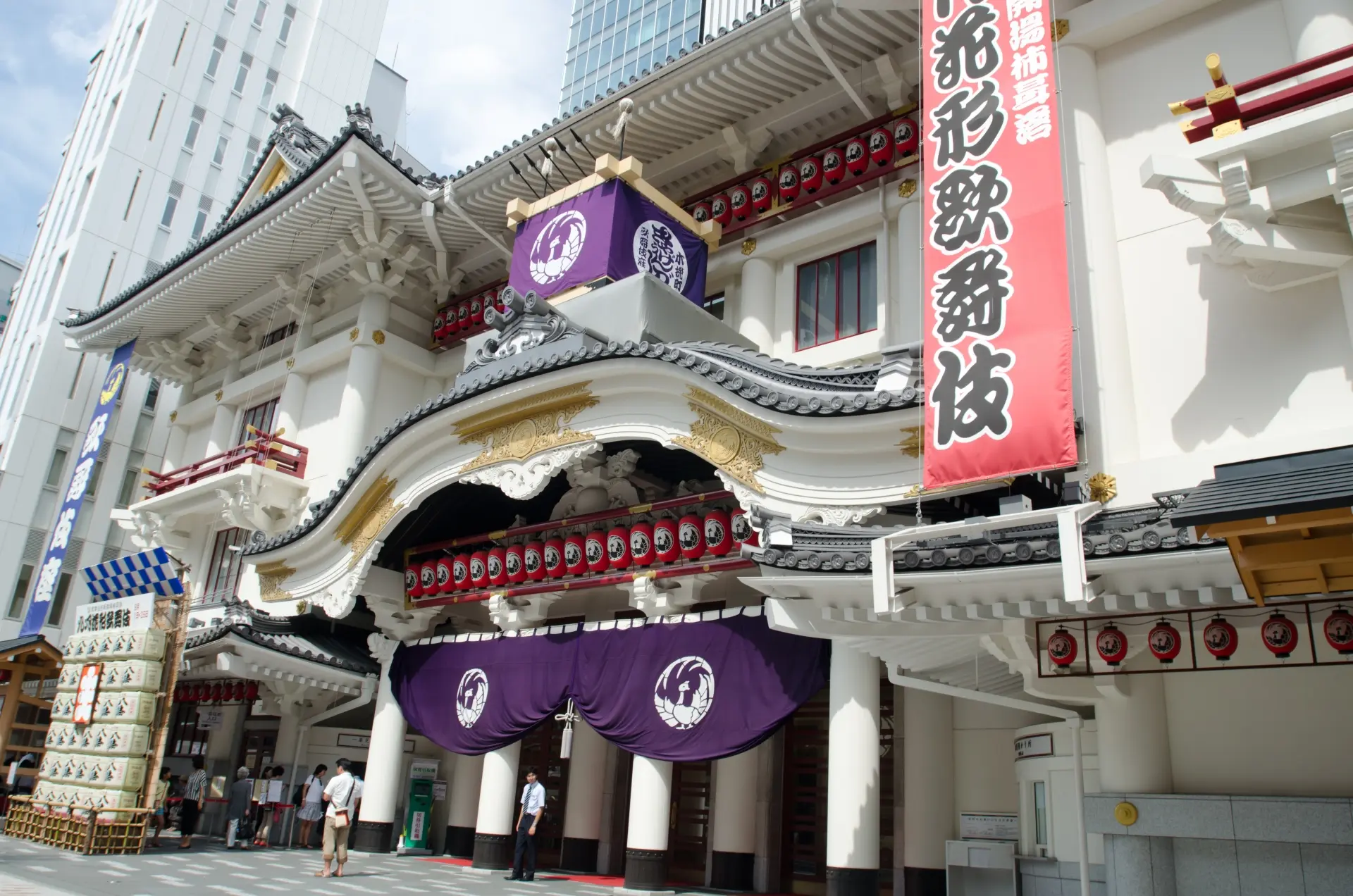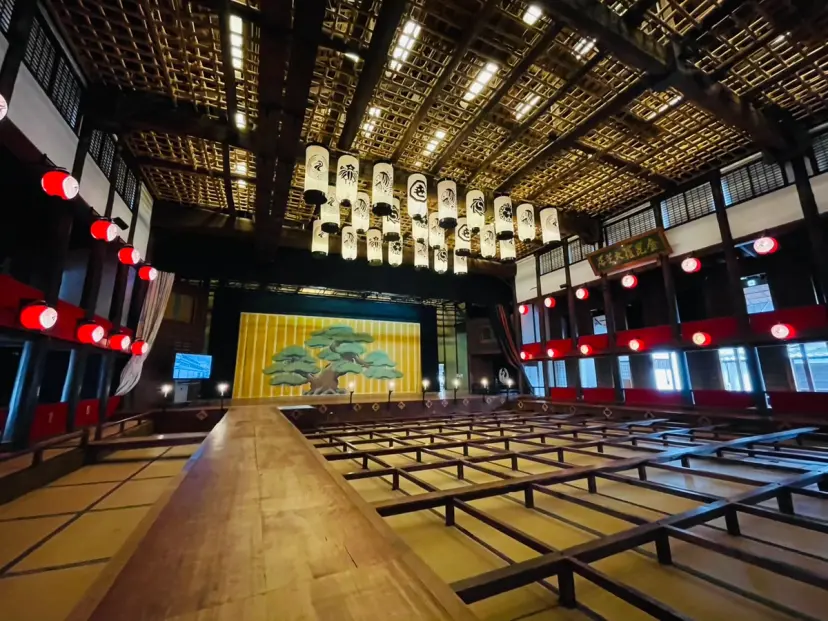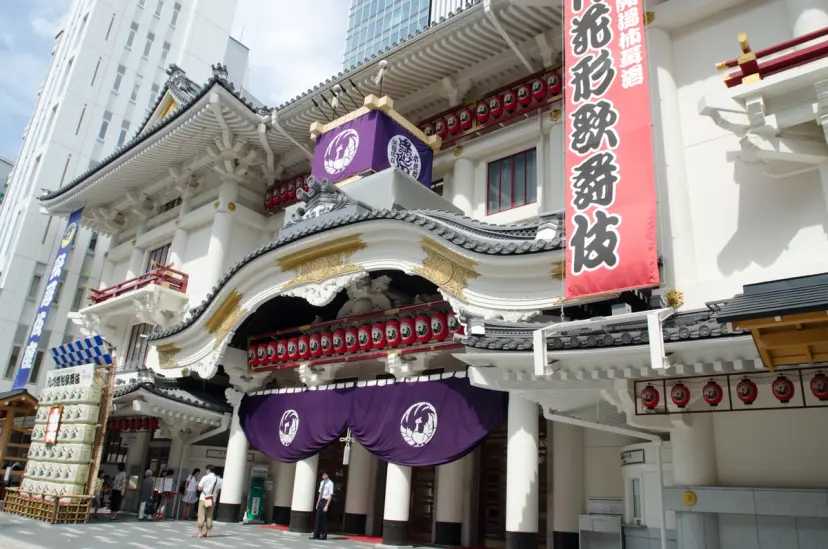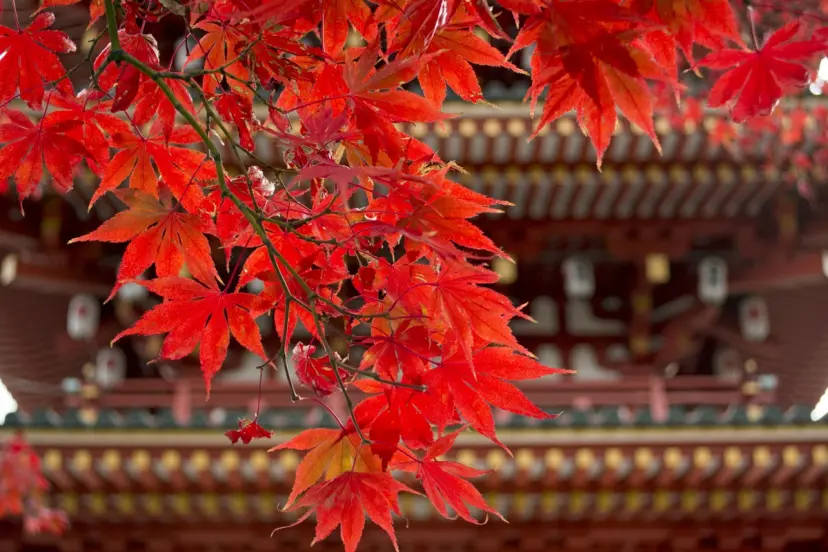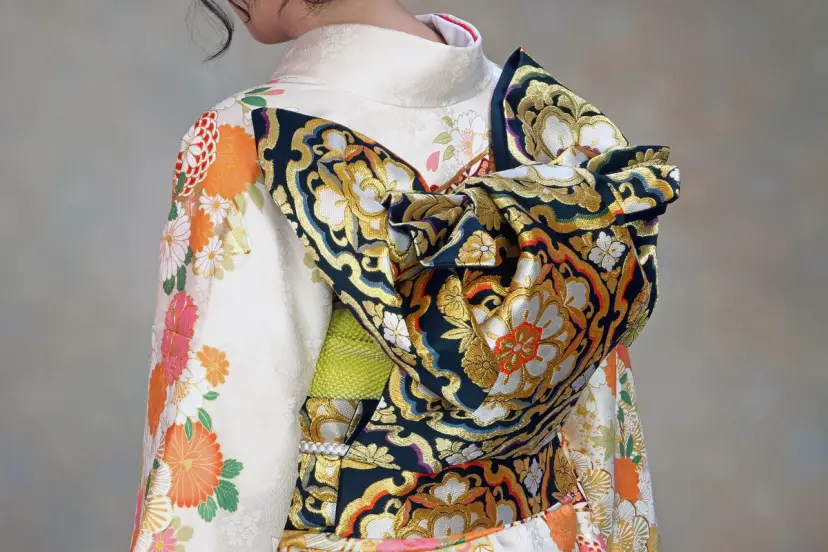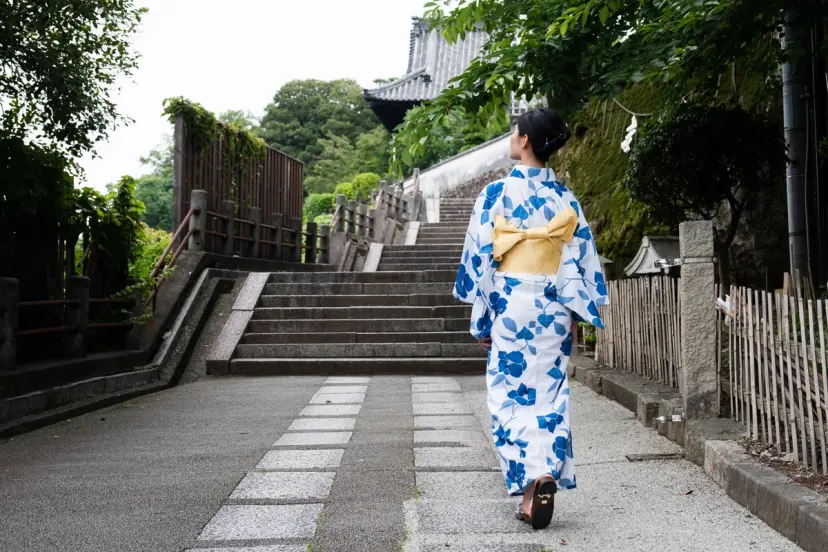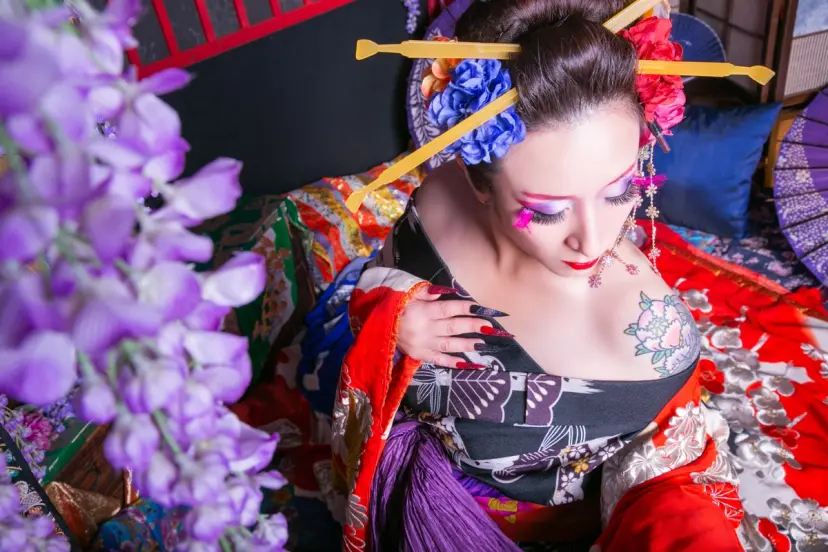Kabuki Vocabulary Guide: Stagecraft, Roles, and Music

Sana Yoshida
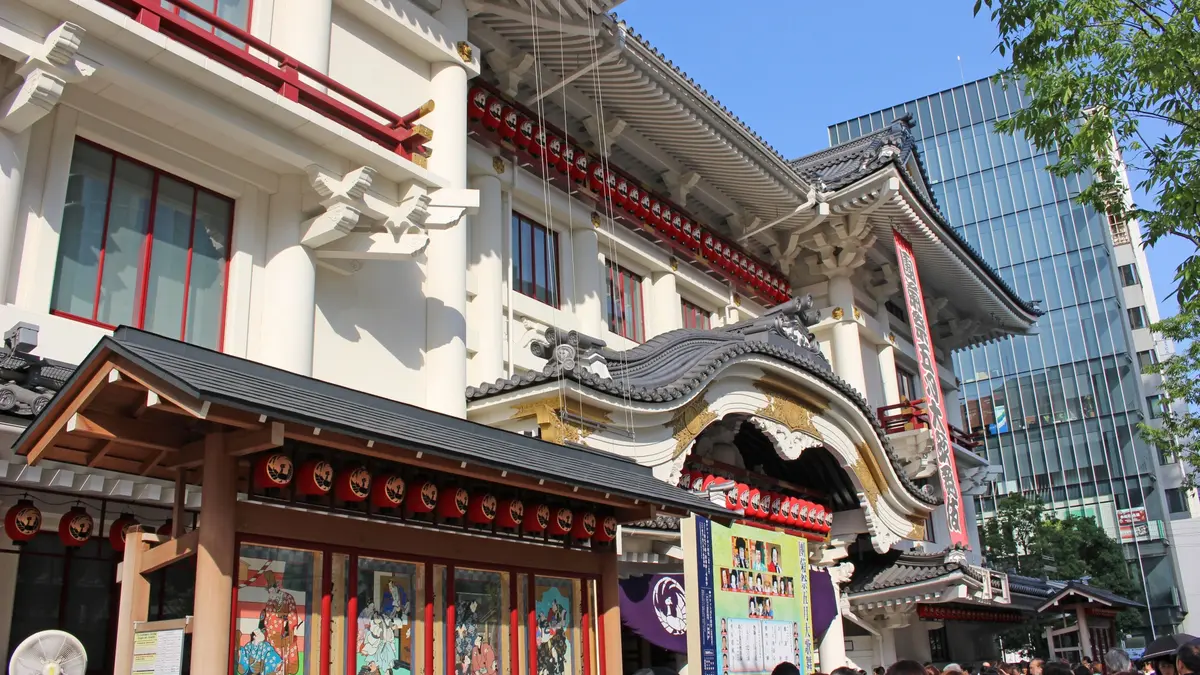
Kabuki is one of Japan’s traditional performing arts, officially recognized as an Intangible Cultural Heritage in 2009. As one of the country’s most iconic art forms, kabuki is rich with its own unique terminology and conventions. By understanding these, you can enjoy performances on a much deeper level.
In this article, we’ll explain some of the basic terms related to kabuki stages and roles.
Elaborate and Dazzling Stagecraft
When people think of kabuki, many likely imagine its vibrant and flamboyant stage effects.
While kabuki was once performed on Noh stages or outdoor venues, it began to evolve around Kyōhō 3 (1718). Roofs were added to the stages, transforming them into fully covered structures. This period also saw the development of iconic stage innovations such as the hanamichi and revolving stage, which are now staples of kabuki theater.
Hanamichi
A raised passage on stage-left that connects the main stage to the toya—a small room at the far end of the hanamichi where actors and props wait for their cue. It is used to represent corridors, streets, and many other settings. Depending on the play, a temporary walkway called a kari-hanamichi may also be set on stage-right.
Suppon
A small lift located on the hanamichi. It is mainly used for the entrance and exit of supernatural beings such as sorcerers, yokai, and ghosts—characters beyond the realm of humans.
Revolving Stage (Mawari-Butai)
Set at center stage and turning horizontally, it allows for rapid scene changes by preparing two different sets—front and back—in advance.
Seri (Stage Elevator)
A lift that rises from the area called naraku beneath the stage. It brings actors on and off stage or allows the stage crew to create dramatic effects such as revealing a hidden underground space, adding impact and spectacle to the performance.
Watch the Stage Devices in a Video
The official NTV NEWS Culture channel has a video tour of the backstage areas in a kabuki theater.
It offers rare access to spaces the general public seldom sees—well worth a look if you’re curious.
Roles in Kabuki
Characters’ age, occupation, and dramatic function determine their costume, wig, makeup, and performance style. This allows the audience to identify who the protagonist is and who the antagonist is.
Especially recognizable characters are often heavily exaggerated, portrayed in a way that makes them instantly understandable—like the hot-blooded protagonist in anime or manga, or the snide authority figure.
Tachiyaku
The adult male leads—and the actors who play them. Categories include aragoto (bold, heroic types), jitsugoto (sober, commonsense men), wagoto (handsome lovers in romantic pieces), and wakashu (youths with forelocks). Among jitsugoto, the cool-headed fixer who resolves the case near the end is called the sabaki-yaku.
Onnagata
In kabuki, roles other than very young children are performed by men. Onnagata portray a range of women: musume-yaku (young maidens), sewa-nyōbō (virtuous, mature wives), keisei (glamorous courtesans), katahazushi (high-ranking ladies-in-waiting and samurai wives), and kashagata (women of a certain age, including elder ladies).
The role demands not only graceful, feminine movements and beauty, but also significant physical strength and skill—as performers wear elaborate costumes, wigs, and geta (wooden clogs) like those of an oiran courtesan, with the total weight said to reach up to 40 kilograms (88 pounds).
Kataki-yaku (Villains)
Villain roles include Jitsu-aku (charismatic masterminds of evil), Kuge-aku (high-born villains), Kunikuzushi (plotters who aim to topple the realm), Iro-aku (seductive yet cruel men), and Akattsura (hot-headed brutes with red makeup).
Villainous female roles—called Kayaku in this context—are played by actors who usually perform male parts.
Oyajigata / Fukeyaku
Middle-aged men and elders. These roles often carry significant dramatic weight in the story.
Dōke
This is a comedic male role known as a sanmaime. The character is designed to make the audience laugh through humorous costumes and exaggerated movements. A comical villain, in particular, is referred to as a handō-gataki.
Other Roles
There are a variety of other roles, including koyaku—children’s roles played by actual children—as well as animals, spirits, and ghosts that take human form.
Music of Kabuki
From narration and background music to sound effects, a wide range of sounds are performed live on stage.
Not only do they enhance the mood of the play, but the musicians skillfully use sound to portray everything from rain, wind, and crashing waves to animal cries and even the appearances of otherworldly beings. Let’s take a closer look at these behind-the-scenes performers who bring the stage to life with sound.
Hayashikata
The instrumental ensemble that provides accompaniment and effects using shamisen, flutes, drums, and other narimono (percussion and sound-making props).
Different shamisen are used depending on the piece: thick-neck (futozao) for rich low tones, medium-neck (chūzao) for a mellow, settled timbre, and thin-neck (hosozao) for bright, agile highs.
Flutes include a set of twelve shinobue in different pitches and the distinctive nōkan. Drums include the ō-daiko (large drum) for big effects, and rhythm instruments such as shime-daiko, kotsuzumi, and ōtsuzumi.
Metal percussion called kane varies by scene. Examples include dora (gong found also in orchestras), hon-tsurigane (a small bell like a temple bell), atari-gane (a clapper used in lively festival scenes), and matsumushi (a saucer-shaped bell with three tiny legs).
Other sound effects are made with shells, beans, and many ingenious props.
Nagauta
Vocalists who sing poetic lyrics to shamisen accompaniment. Working in ensemble or as soloists with flutes and drums, they fill a role somewhat akin to the orchestra in opera.
Takemoto / Gidayū
The takemoto play a central role in Gidayū kyōgen, kabuki plays adapted from ningyō jōruri (traditional puppet theater).
These performers often narrate the scenes and express the emotions of the characters in sync with the shamisen. The style has a deep, resonant quality and is often compared to blues music for its expressive storytelling and emotional tone.
Tokiwazu
A high, unhurried narrative style that adds both lightness and gravitas to a scene.
Kiyomoto
A relatively newer kabuki music style known for its playful spirit. Showy delivery, delicate melodic turns, and techniques like falsetto and nasal resonance are hallmarks.
Ki / Tsuke
At the opening and closing of a Kabuki performance, a sharp, clear "chon chon" sound rings out. This sound comes from hyōshigi—wooden clappers commonly used in traditional Japanese theater. In Kabuki, the hyōshigi are referred to as ki. They are struck by the kyōgen sakusha (playwright and stage director), who is responsible for overseeing the entire progression of the performance—from the curtain’s rise to its fall.
When the sound is used to emphasize an actor’s footsteps or other dramatic movements, it’s known as tsuke. The performer produces the sound by striking a wooden board (tsukeban) placed on the floor, creating a sharp effect that punctuates key moments on stage.
Conclusion
Kabuki, with its long and rich history, has developed a unique set of terminology. While remembering all of it can be quite a challenge, even knowing just a little can help you better understand the world and characters when you watch a performance.
In addition to the story and the actors, the stage mechanics and music are also major highlights. Try discovering your own way to enjoy Kabuki—it’s all part of the experience!
- Related Links
Kabuki Bito (Japanese)
Tags:
Kabuki